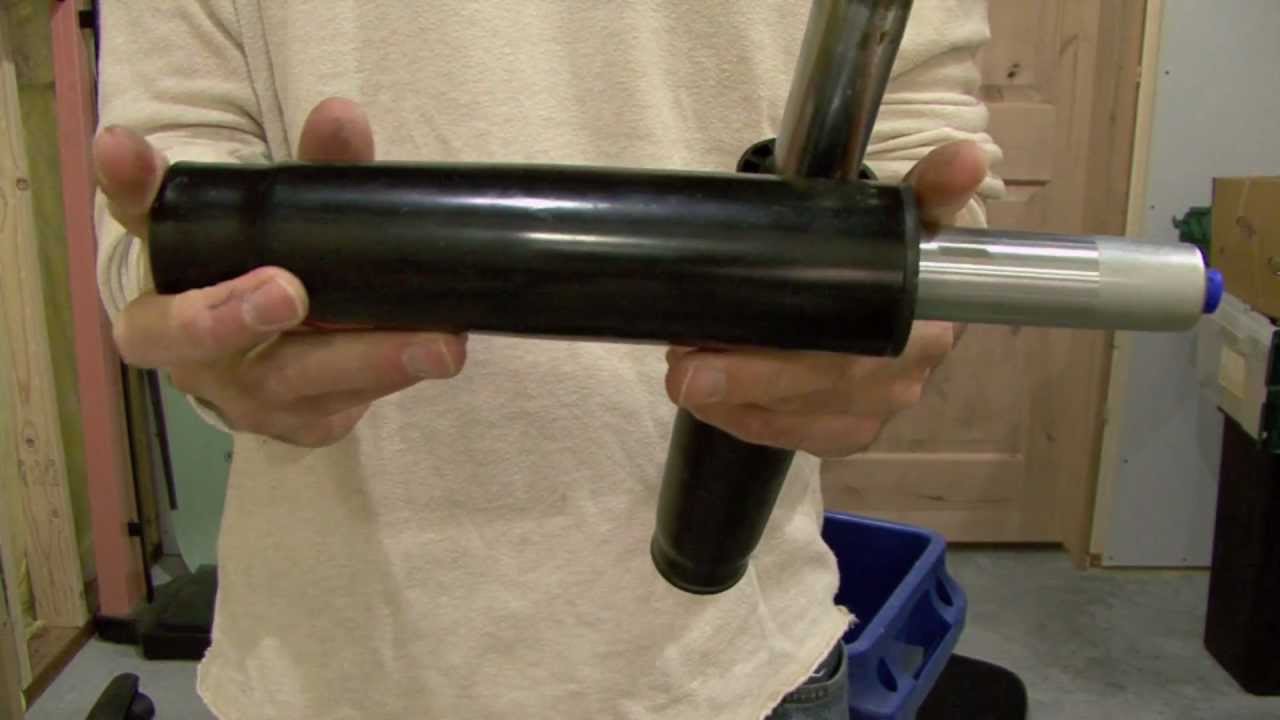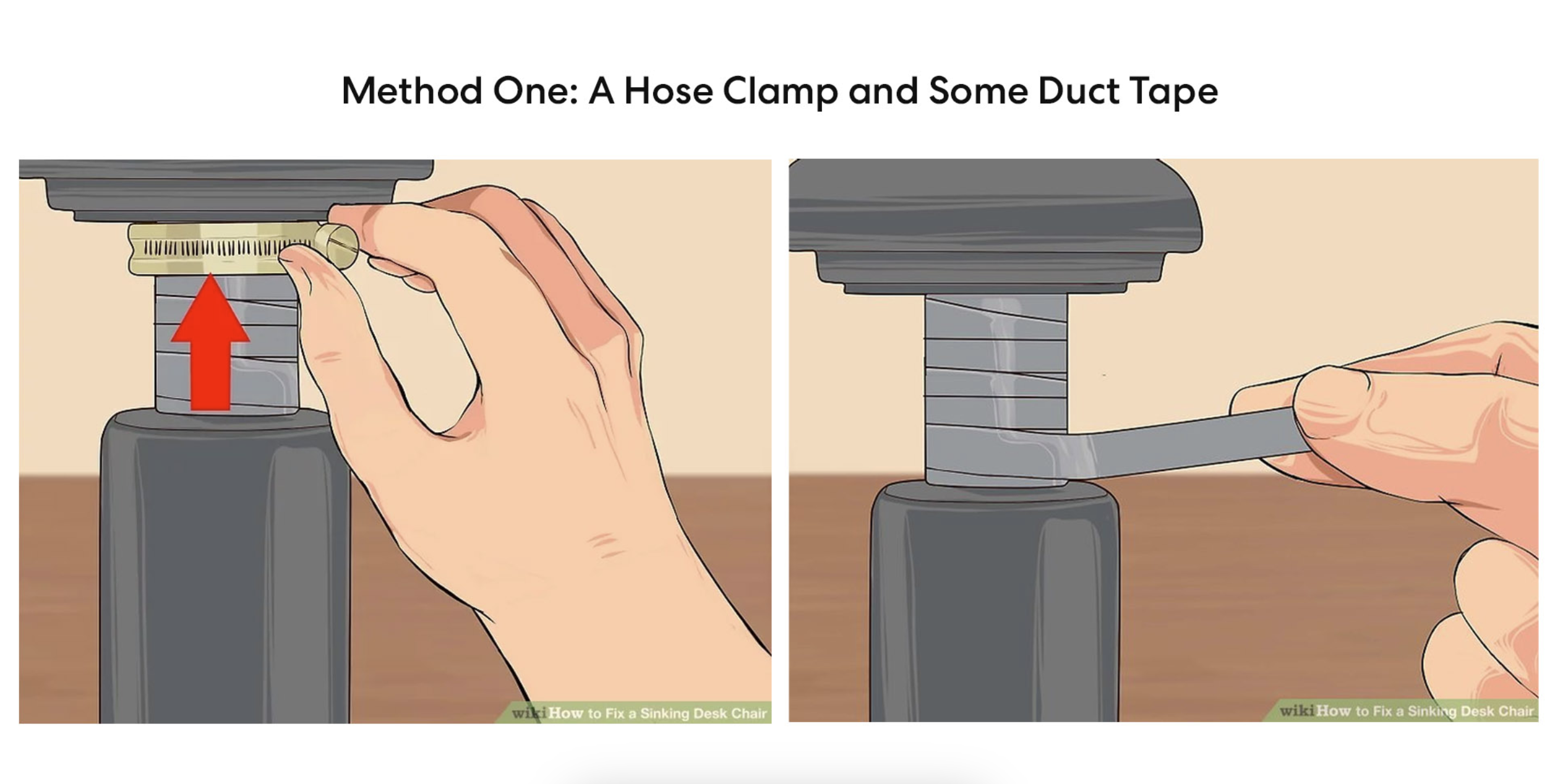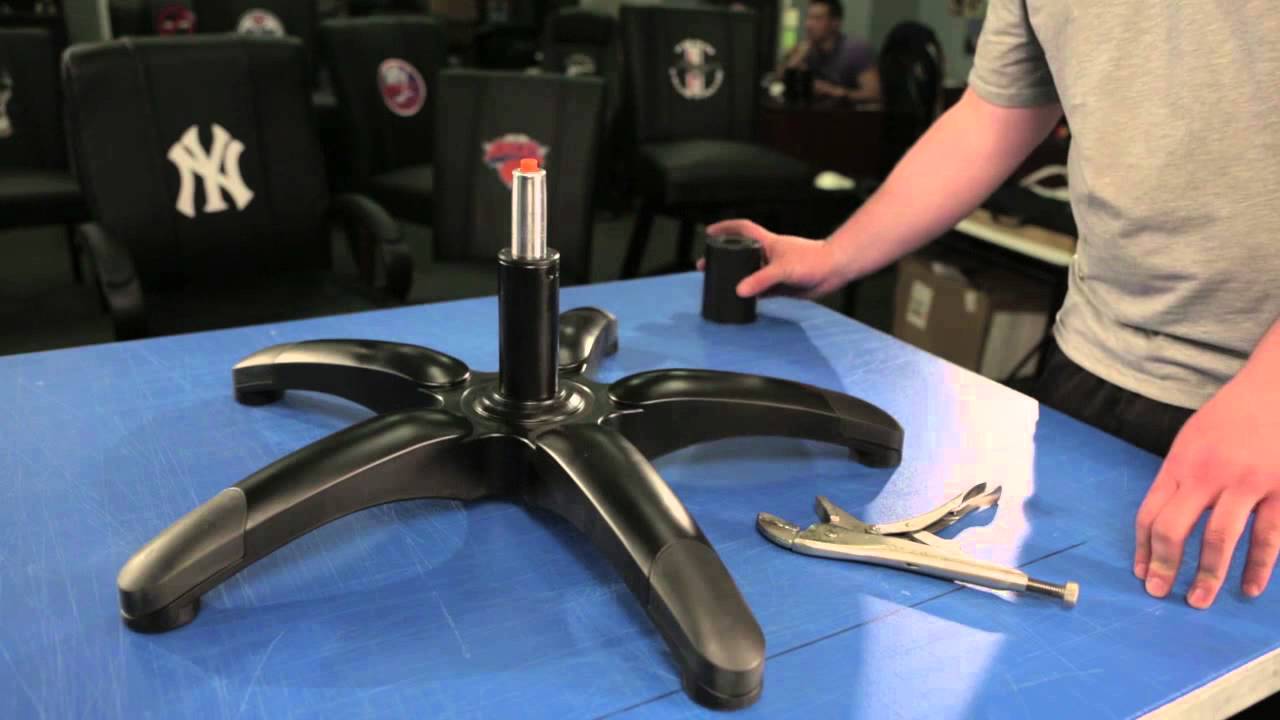Physical Address
304 North Cardinal St.
Dorchester Center, MA 02124
Physical Address
304 North Cardinal St.
Dorchester Center, MA 02124

while a sinking office chair can be a nuisance, it's a problem that can be fixed with a little bit of effort. Whether you choose to replace the gas cylinder, use a hose clamp or duct tape, or fix the hydraulics, you can restore your chair to its former glory and enjoy a comfortable and productive workday.

Office chairs are vital for a productive and comfortable work environment, particularly during those long hours at the desk. However, a common challenge arises when your office chair begins to sink, leading to discomfort and frustration. This guide addresses this issue head-on, offering effective solutions on how to stop your office chair from sinking. We’ll explore both temporary fixes and long-term solutions to ensure your chair remains stable and supportive.
Office chairs are a crucial part of our work environment, especially for those who spend long hours at their desks. However, a common issue that many people face is the sinking of their office chairs. This problem can be quite frustrating, especially when the chair appears to be in good condition otherwise.

The root cause of an office chair’s sinking is typically a failed hydraulic gas cylinder, tasked with adjusting the chair’s height. Over time, the cylinder’s seal deteriorates, leading to leakage and the chair’s gradual descent. This not only disrupts your comfort but also impacts your posture and productivity. Understanding and addressing this issue is crucial for a seamless work experience. Discover more about maintaining your chair’s functionality in our comprehensive guide on office chair maintenance. This cylinder contains nitrogen gas, and when you pull the chair lever, the gas switches chambers inside the cylinder, allowing it to move up and down. Over time and with excessive use, the seal in the cylinder starts to wear out and leak, causing the chair to sink down.
This issue can disrupt your workflow, especially if you’re in a meeting or deeply engaged in a project. It’s not just about comfort; a sinking chair can affect your posture and productivity. While it’s a common annoyance, it doesn’t mean that you need to replace the entire chair. There are several methods to stop your office chair from sinking, ranging from temporary fixes like hose clamps and duct tape to more permanent solutions such as replacing the cylinder.
For a lasting solution to prevent your office chair from unexpectedly descending, replacing the gas cylinder is highly recommended. This involves accurately measuring the existing cylinder, acquiring a suitable replacement kit, and installing it to restore your chair’s stability. Not only does this solve the sinking issue, but it also rejuvenates your chair’s overall functionality. Learn more about choosing the right replacement parts in our detailed ergonomic chair buying guide. This process involves measuring your chair’s gas cylinder, purchasing a replacement gas cylinder kit, and replacing the old cylinder with the new one.
When looking for ways on how to keep your office chair from sinking, you’ll find both temporary and permanent methods. Quick fixes might seem appealing for their immediate effect, but they often lack professionalism and durability.
To effectively stop an office chair from sinking, replacing the gas cylinder is your best bet. This is a more professional-looking solution that restores the chair’s ability to maintain its height.

To replace the gas cylinder, you’ll need to first remove the base of the chair to access the cylinder. After removing the old cylinder, install a new one to regain proper function. There are numerous online tutorials and guides that can assist you with this process.
For those who need an immediate fix, using a hose clamp or duct tape can temporarily stop an office chair from sliding down. This involves securing the clamp or tape around the cylinder to prevent it from compressing.

In urgent situations, a hose clamp or duct tape can serve as a quick fix to halt the descent of your office chair. While effective temporarily, these methods lack a professional appearance and durability. They’re best used as interim solutions while you secure a more permanent repair like cylinder replacement. For insights into balancing aesthetics and functionality in your office furniture, check out our article on stylish ergonomic desk chairs.
If you’re adept with DIY solutions, you might consider fixing the hydraulics yourself. Ensure that the hydraulic fluid is at its proper level and inspect the piston and seals for any damage or wear.

If these suggestions seem out of your comfort zone, it’s advisable to seek professional assistance or consult with your chair’s manufacturer.
By understanding how to address the issue of a sinking chair, you can save money and extend the life of your office furniture. Whether you opt for a quick fix or decide to replace parts, you can ensure your workday remains comfortable and productive.
To keep your desk chair from sinking, regular maintenance is key. Here’s how to maintain your office chair effectively:
Regular maintenance is key to preventing your desk chair from sinking and ensuring its longevity. Start with routine cleaning and vacuuming, adapting your approach based on the chair’s material. Addressing the casters, cylinder, and hydraulics, and ensuring all bolts are secured, can significantly extend your chair’s life. For more tips on keeping your chair in prime condition, explore our guide on the importance of ergonomic chairs in the office.
Cleaning different chair materials requires specific approaches. For fabric chairs, regular vacuuming is typically sufficient. However, leather chairs demand more care, often needing specialized conditioners to prevent cracking and maintain their sleek appearance. This targeted maintenance ensures the longevity and aesthetics of your chair. For in-depth care tips tailored to various chair materials, visit our guide on the best materials for your ergonomic chair.
Proper caster care is crucial for smooth and efficient chair movement. Regularly clearing debris from the casters can prevent them from jamming or causing uneven movements. Maintaining casters not only enhances chair mobility but also contributes to the overall stability of your office chair. For more on the importance of caster care in chair longevity, explore our article on mastering chair mechanism selection.
Regular maintenance of the chair’s cylinder and hydraulics is essential to prevent sinking issues. If tightening screws doesn’t resolve the problem, replacing the cylinder should be considered. To ensure smooth operation, lubricate the cylinder with synthetic grease every six months. This proactive maintenance can save you from future discomfort and the need for more extensive repairs. Learn about the intricacies of hydraulic care in our detailed guide on ergonomic office chairs with lumbar support.
Securing bolts and screws is a simple yet crucial step in chair maintenance. Regularly check and tighten them to prevent wobbling or instability, which can exacerbate sinking problems and compromise the chair’s structure. This fundamental maintenance task can significantly enhance the chair’s safety and durability. Discover more about maintaining the structural integrity of your chair in our comprehensive office chair shopping guide.
By taking these steps for routine maintenance, not only will your chair look and work better, but it will also last longer. Even if certain chairs claim no maintenance is needed, a few minutes spent on upkeep can make all the difference.
In conclusion, whether you’re trying to stop your office chair from sinking or simply looking to keep it in top condition, there are several strategies you can employ. Remember to consult with professionals if you’re unsure about any maintenance steps.
If your office chair slowly sinks throughout the day or fails to maintain its height after you adjust it, this is a common sign that the gas cylinder is failing and may need to be replaced.
Yes, it’s generally safe to replace the gas cylinder by yourself if you follow the manufacturer’s instructions or watch a reliable tutorial. However, ensure you have the right tools and take safety precautions, such as wearing protective eyewear, to prevent injury.
Regular maintenance, such as tightening screws and lubricating moving parts, should be performed every six months. However, if you notice any signs of wear or changes in chair performance, you should inspect and address these issues immediately.
The hose clamp used should be of the appropriate size to fit snugly around the cylinder without damaging it. Adjustable hose clamps are often recommended because they can fit a range of cylinder sizes.
If temporary fixes aren’t working and replacing the gas cylinder doesn’t solve the problem, it might be time to consult with a professional furniture repair service or consider investing in a new office chair.